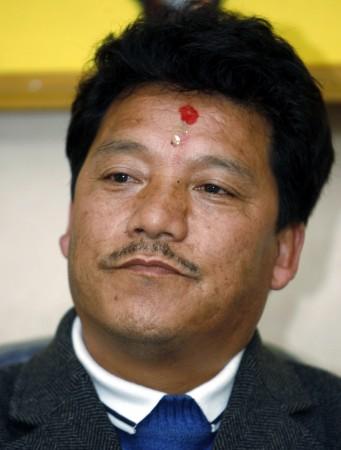
Gorkha Janmukti Morcha(GJM), the most prominent force in the Darjeeling Hills that led the movement for a separate Gorkhaland in North Bengal since the fall of the late Subash Ghishing's Gorkha National Liberation Front (GNLF), is continuing with its tirade amid the rising pressure from all quarters – the Centre, judiciary besides Chief Minister Mamata Banerjee's government in Kolkata.
The chief of the GJM – Bimal Gurung – has given call for the "final battle" though he himself has been on the run to escape the hand of law. The call looks more of a desperate effort to keep his supporters' morale high than a real threat. But who is this Gurung who, in an over-enthusiasm to achieve his goal, virtually dug up his own grave?
Born on July 17, 1964, Gurung was a member of the Gorkha Volunteers Corps and fought for the cause of Gorkhaland in the mid-1980s when Ghishing's GNLF was in control. He also became a councillor of the now defunct Darjeeling Gorkha Hill Council representing the Tukver constituency and became a close aide of Ghishing. But Gurung had a fallout with his mentor later and as the latter's clout diminished, Gurung rose to spearhead the second Gorkhaland agitation since the late 2000s.
The fallout had a start in 2004 when the then Left Front government refused to hold an election to the DGHC and made Ghishing the only caretaker of the body till the Sixth Schedule Council was set up but the idea was opposed by many, including Gurung.
In 2007, Bimal Gurung made use of Indian Idol Prashant Tamang's popularity
In 2007, when a local lad called Prashant Tamang won the Indian Idol competition, generating a craze in the Hills, Gurung capitalised on it politically to renew the call for a separate Gorkhaland. Gurung earned a popular support and overthrew Ghishing who had to leave the Hills. Gurung set up his GJM the same year and it replaced the GNLF as the main force in the Hill politics.
Gurung included many parts of the Terai and Dooars in his renewed call for Gorkhaland which was largely peaceful in the beginning, unlike what it was during the Ghishing era.
However, things began to take a turn towards the worse following the murder of Akhil Bharatiya Gorkha League chief Madan Tamang in the broad daylight in May 2010. Gurung was suspected to have a link with Tamang's killing and it led to more dissent in the Hill politics, dealing a blow to Gurung's popularity.
Mamata Banerjee's cold-and-hot strategy blew Gurung away
After Mamata Banerjee came to power in May 2011 and her initiating a tripartite agreement involving the GJM and the Centre which set up the Gorkhaland Territorial Administration (GTA) replacing the DGHC, many thought peace was not far from the Hills. But given Banerjee's strategy of reaching out to the Hill people herself unlike the strategy of co-existence adopted by the Left in the past, Gurung began to perceive a threat to his authority in the Hills.
Banerjee's growing strength across the state also got reflected in the Hills where the ruling Trinamool Congress has gradually gained a foothold put the GJM on the backfoot. The GJM's lessening stature in the last state elections and the TMC's good performance in the recent civic elections in the Hills convinced a section of the GJM leadership that Banerjee is a tough customer unlike the Left leaders.
The growing charges of corruption against the GJM leadership in the GTA which it dominated besides the GJM's enmity with other ethnic and tribal bodies and Banerjee's empowering them seriously hurt Gurung's chances even though he remarked: "I am the chief minister of the Hills".
The state government's decision to make Bengali compulsory in the state's schools was a decisive blow for the GJM's authority and when Banerjee decided to hold a cabinet meeting in the Hills, it was too much for the GJM to digest. Gurung, who had tried to befriend the BJP to corner Banerjee, also found little support and he has perhaps reached the nadir of his political career now.
History was a tragedy when Ghishing was toppled. Will it be a farce for Gurung?








